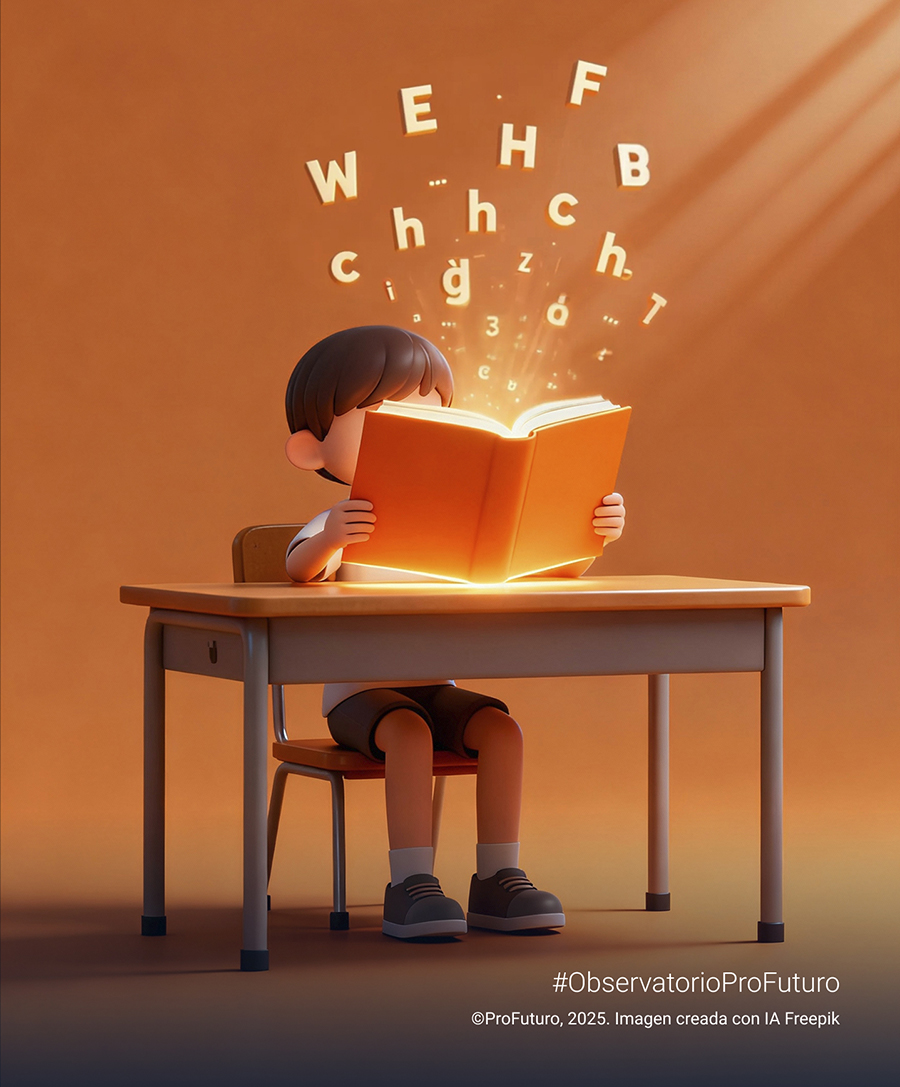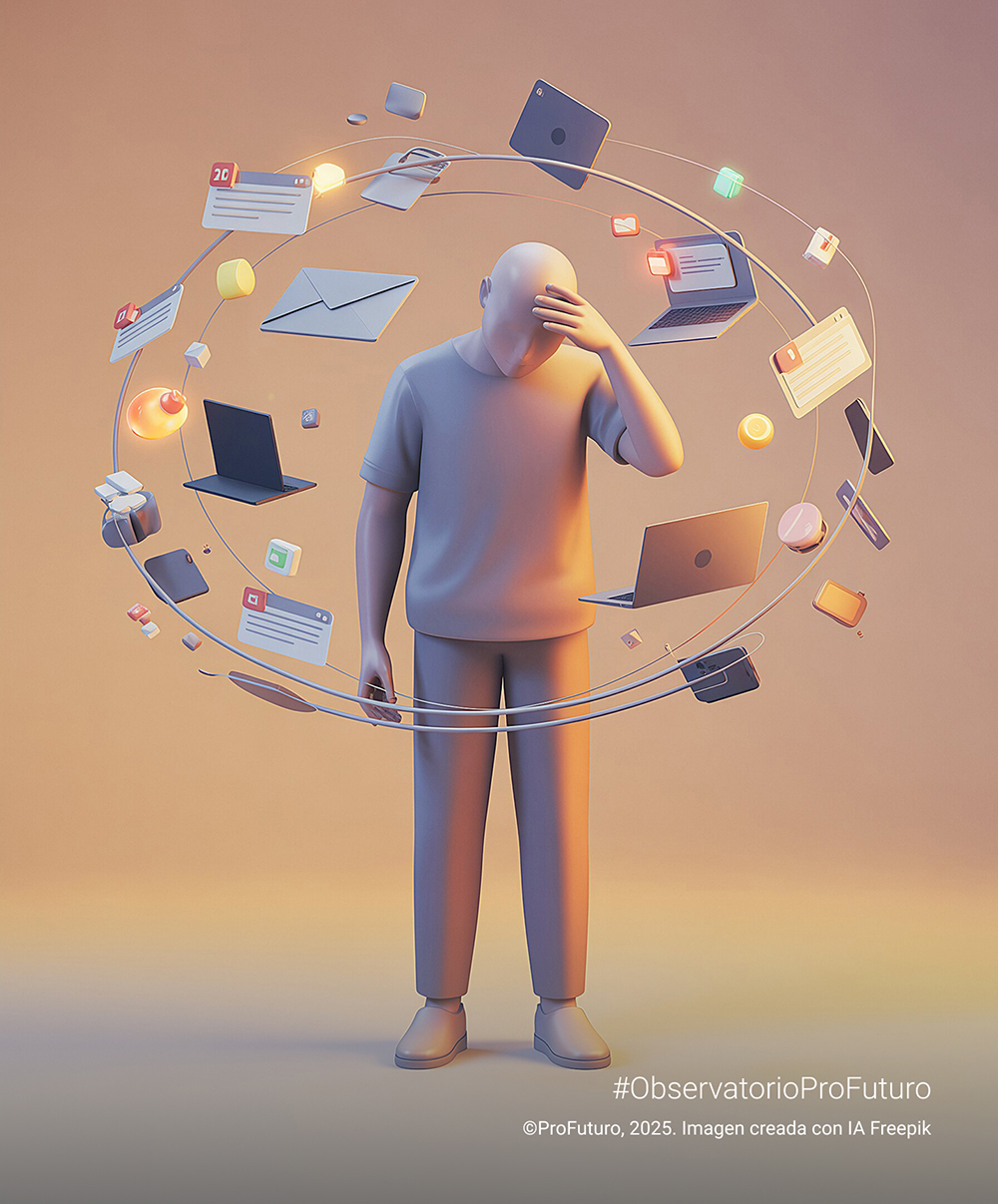
As we do every year, the ProFuturo Observatory looks back on the most significant articles we have published. In 2024, our focus was especially on the relationship between education and technology, a dynamic that continues to spark passionate debates in the educational field: Should technology in the classroom be banned or integrated? How can we overcome myths and truly harness its transformative potential? What roles do motivation, students’ socio-emotional development, and media literacy play in this process? This special feature gathers ten essential reads to rethink the educational model, identify international best practices, and lay the foundations for a more innovative, engaging, and relevant 21st-century school tailored to the needs of the digital society.
Educating Through EdTech: Challenges and Opportunities in Transforming Education
In an environment marked by technological acceleration and a crisis of purpose in schooling, this article invites readers to redefine the educational mission to fully leverage the potential of digital innovation.
The False Debate About Technology in Classrooms
Often, discussions are reduced to extreme positions (total prohibition or uncritical advocacy). This article advocates for a more nuanced perspective, viewing technology as a tool that can enrich and transform education when used critically and thoughtfully.
Defending the Use of Digital Technology in Classrooms
Addressing the “digital divide” among students is crucial. Laura Cuesta Cano, a specialist in education and family, argues for a balanced use of ICTs as an essential part of holistic student development in an increasingly digital world.
Successful Digital Education: Lessons from Those Who Got It Right
Having moved past the debate over whether technology should be used in the classroom, the next question is how to implement it effectively. This article examines the digital education policies and strategies of ten outstanding countries to extract valuable lessons.
Thinking Outside the Box: Promoting Innovative Ways of Thinking and Problem-Solving
Conventional responses and the demonization of mistakes are like ticking time bombs, threatening the very core of our learning systems. Creative thinking is a key tool to combat this deeply ingrained issue in our classrooms. This article explores how to foster it through four distinct initiatives.
Neuro-Learning, Pedagogy, and Instructional Design
Joaquín Rodríguez, a research professor in the Educational Technology Research Group at the Institute for the Future of Education at Tecnológico de Monterrey, highlights the importance of adapting pedagogical approaches and instructional design to the fundamental principles of learning. He emphasizes the need for a shift towards more interactive, personalized, and evidence-based practices in education.
Students and Screens: What PISA Tells Us
Screens: yes or no? Using PISA data, this article rigorously examines the relationship between digital device usage and educational outcomes, as well as the challenges and opportunities that technology integration presents.
Digital Natives: The Great Myth
The term “digital natives,” popularized by Marc Prensky in 2001, describes young people who grew up in a technology-saturated environment. This article delves into the origins of this myth, studies that debunk it, and the dangerous implications of mistakenly assuming that young people are “digital experts” simply because they were born in the Internet era.
Rediscovering the Joy of Learning
Loss of motivation is one of the greatest challenges in today’s education. In this article, Carmen García de Andrés shares experiences and projects that approach learning from a socio-emotional perspective, reigniting students’ enthusiasm for education.
How to Learn and Teach Media Literacy
Have you ever fallen for fake news? Do you know why Google search results are ordered the way they are? Are you someone who accepts all cookies without a second thought? Learning and teaching media and information literacy (MIL) has become a vital necessity. This article outlines what educators and students need to know to be media literate.






